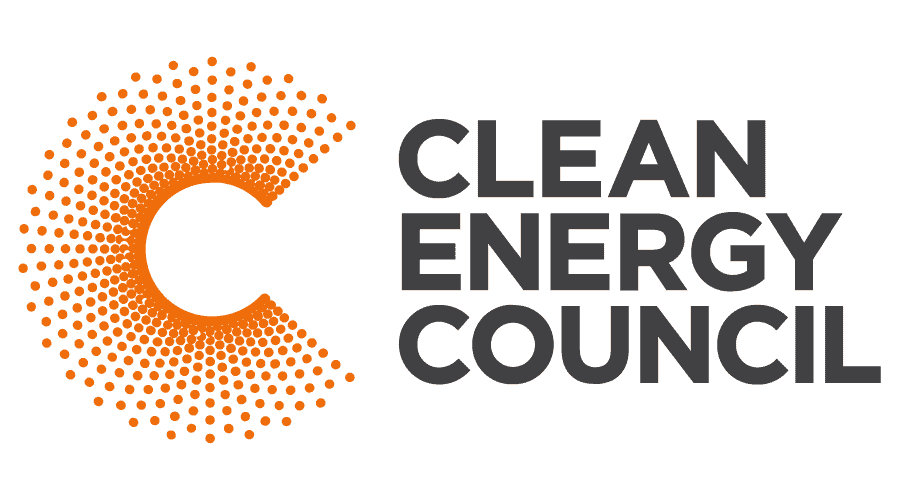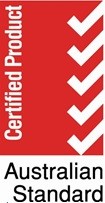
Download the PDF file: Photovoltaic (PV) Array and Battery Energy Storage Systems
This fact sheet will cover safety advice relating to residential systems only.
Photovoltaic (PV) Arrays (also referred to as solar panel systems) are commonplace in South Australian residential properties, in both new builds and retrofitted to existing homes. Many residential solar panel systems are installed in conjunction with a Battery Energy Storage System (BESS) which allows the energy produced by the solar panel system to be stored by the BESS for later use, such as night-time, or to provide back-up power in the event of blackouts.
Photovoltaic (PV Arrays (or solar panel system)
A solar panel is an assembly of photovoltaic cells mounted in a frame. Solar panels use sunlight as a source of energy to generate direct current (DC) electricity. Solar inverters convert this DC electricity to alternating current (AC) electricity, which is then transferred to an electrical fuse box. From there, electricity is dispersed throughout the home’s electrical circuits for use.
A grid-tied solar system enables electricity to move to and from the power grid via a Smart Meter (replacing old electricity meters). Residents may receive power credits when electricity goes back to the grid therefore reducing the overall cost of power. If a Battery Energy Storage System (BESS) is installed on a property, excess solar-generated electricity would be stored into the BESS for later use.
Accreditation
The Clean Energy Council (CEC) accredits both installers and the systems that meet certain standards. Ensure both the product retailer and installer are approved by the Clean Energy Council, and that the solar panels and inverter meets the relevant Australian Standards.


Inspection and maintenance
Solar Panels
- An inspection of installed solar panels and inverter will not only ensure the system is working efficiently but will reduce the risk of a potential fire occurring.
- The MFS recommends engaging an accredited contractor to inspect a solar panel system.
- They should check the solar panels are clean, secure, and free from defect by;
- Checking if any parts have deteriorated or corroded, especially the ‘Panel Isolation Switch’.
- Confirm that fittings and cables are securely attached, and
- Check the condition of the wiring under the panels for wear and tear. Years of rubbing against roof material in windy conditions could expose the protective covering, therefore showing bare wires. This may cause sparking or arcing that may cause a potential fire risk.
- After severe weather events like strong winds and hailstorms, check for damaged or cracked panels.
- There may also be combustible debris like tree branches, bark and leaves that have blown under
solar panels, creating a potential fire risk. Check the Invertor Panel as it may indicate a fault. Any
repairs should be carried out by an accredited contractor.
Inverter
- The MFS recommends engaging an accredited contractor when inspecting Inverters for any faults that may have presented on the inverter panel.
- Contact installer/contractor, if unsure of the safe operation of an inverter.
- Become familiar with the signs and decals attached to the fuse box and invertor including information for shutdown.
- Maintain a clearance around the inverter, and ensure that the inverter’s vents are clear of debris/cobwebs etc.
- If located internally, check the area surrounding the inverter is clear and there is airflow around the device.
- The MFS recommends that a smoke alarm is installed in the vicinity of the inverter. If the inverter is located in a dusty area, consider installing a heat/thermal detector instead of a smoke alarm.
- Review the DC Isolator display panel for recorded faults.
- Know your EMERGENCY – SHUTDOWN procedures.
- Ensure the emergency procedure signage for shutdown and isolation are clearly displayed.
- This procedure may vary between systems, check manufacturer instructions.
IN AN EMERGENCY
- If the inverter and/or the solar panel is smoking or on fire, call 000 immediately.
- If it is safe to do so, follow the manufacturer’s instructions for the shutdown procedure.
- Evacuate to a safe area out of the smoke, until the Fire Service arrives.
Battery Energy Storage Systems (BESS)
Residential Battery Energy Storage Systems (BESS) installation rates are increasing rapidly in South Australia.
Batteries are a type of energy storage technology that uses chemicals to absorb and release energy on demand. Lithium-ion is the most common battery chemistry used to store electricity. A BESS installed in conjunction with a solar panel system stores the energy produced by the solar panel system for later use, such as night-time, or to provide back-up power in the event of blackouts.
This technology however does come with risks and hazards which may result in fire and explosion.
Accreditation
The Clean Energy Council (CEC) accredits both installers and the systems that meet certain standards. Ensure both the product retailer and installer are approved by the Clean Energy Council, and that the BESS meets the relevant Australian Standards 5139.
Information on BESS and approved installers can be found on the Clean Energy Council’s website.
Installation
If a BESS is to be installed on an external wall, the MFS recommend avoiding placing it on a side that is exposed to direct sunlight for most of the day. This will reduce excessive heat build-up within the BESS during extreme hot weather and may assist in maintaining optimal working temperatures. Protection from wet weather is also to be considered when installing on an external wall.
If a BESS is to be installed in a garage or carport, the MFS recommends the unit is in a position where the vehicle, and the items stored nearby, cannot impact the BESS. Consider installing a heat detector alarm to the ceiling of where the BESS is installed which is interconnected to the smoke alarms in the house. You should also consider the placement of bollards to prevent any accidental damage.
Australian Standard AS 5139 refers to the safe installation of BESS systems.
Inspection and maintenance
- Regularly inspect the BESS, ensuring any fault lights haven’t activated and that the unit is in good working order.
- Ensure that excessive dust or contaminants are not clogging air vents which could result in overheating of the BESS.
- Ensure that no items are stored on or near the BESS unit.
- Keep the contact details of the installer and the system manufacturer somewhere safe and easily accessible in case of an emergency. These details should also be shown and displayed in the meter box along with labelling and signage to inform emergency responders of the presence of a BESS, in accordance with the Australian Standard AS/NZS 5139 Electrical installations - Safety of battery systems for use with power conversion equipment.
Potential Hazards
A residential BESS that has been affected by an impact, fire, electrical event (such as overcharge) or had water ingress must be electrically isolated. The BESS must not be put back into operation, even if it appears to be operational. Contact the manufacturer and/or an authorised technician to inspect and assess the BESS if it has been compromised.
During an incident, if it is safe to do so:
- Follow any shutdown procedures displayed. This may be on or near the switchboard or adjacent to the BESS.
- If the shutdown procedure cannot be found, identify the main power switch for the BESS and switch to OFF. Even when isolated, a BESS will hold high voltage electricity. Always assume that the equipment is energised. Call ‘000’ immediately if you note any of the following.
- As a result of an incident, liquid pooling under the unit, this may be electrolyte or coolant that is required for keeping the battery at an optimum temperature. Do not touch this liquid.
- An odour coming from the BESS.
- Any vapour or ‘smoke’ appears to be coming out of the unit. Remain out of the vapour or smoke.
IN AN EMERGENCY
If any incident occurs:
- Call Triple Zero (000) and inform the operator that a BESS is involved.
- Ensure occupants and neighbours remain out of any vapour or smoke.
- If it is safe to do so, follow the manufacturer’s instructions for the shutdown procedure.
Evacuate the area and wait in a safe location for fire service to arrive, as per your ‘Home Fire Escape Plan’. A good location may be next to the letterbox out the front of your home.
For further advice:
Email: mfs.communitysafety@eso.sa.gov.au
Phone: (08) 8204 3611
Country Callers: 1300 737 637

